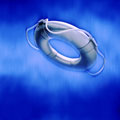|
Five Phase Theory - How we learn and solve problems
How our minds work, from ancient China to modern neural networks.
Our minds work by alternately integrating, bringing together, and differentiating,
reaching out, and we do so in a zigzag or cyclic pattern, that can become a growth spiral.
We oscillate a lot.
“We rise to great heights by a winding staircase.” – Sir Francis Bacon
The Chinese have recognized this for thousands of years in the cyclic form of yin and
yang - integration and differentiation. They’ve traced out the development of yin yang to
five phases, matching our five digits and five senses, and that three of the five phases can
extend to eight (two nostrils, two ears, and two eyes) at times.
When we’re studying a problem, we mentally loop over to our vision of the proposed known
solution and study it, then we go back to studying aspects of the problem. And it's
deeper than that, various parts of our mind-body 'kick-in' to guide us in different ways at
different times (see The Five Memory Systems),and we access them through some
channels (see Dreambody) related to our five senses. The result can be visualized as a
zigzag back and forth as we recall and go over things. Our problem-learning-solving
thought patterns can thus be graphed as a series of zigzags, or as a series of cycles, all
differentiating to integrating in the classic yin yang pattern. The pattern suggests that our
minds are designed to learn by playing, and secondarily to solve problems (to change the
world). We're designed to follow the learning playing process, not to stop at some
'solution'. This is an emergent pattern in that the connection is holistic, and generates
synergy, it's greater than the sum of the parts.
Exactly the same pattern can be used while learning to read, and in reading body
language. You can easily explore and gain the capability to read many times faster and/or
to instantly absorb body language, which many of us intuitively do anyway. Part of the
key to reading things faster is to widen your awareness (eyes and ears and nose and
feelings), and even the actual area that your eyes focus on at any one time. You might
explore this idea by reading something as you practice for a speech, then explain it with
good use of body language in a speech to some group.
When we play we always offer ourselves, or each other, chances to win - as a kind of
win-win - or play falls apart. Natural play lacks ‘balance’ in that it is either attack
(differentiation) or defense (integration), and never both. It balances by dynamically
shifting/playing with attack and defense as proto-truths. When attack and defense are
combined in one animal or person play switches to fighting (the truth/certainty/target in
debate and discussion). You might visualize this in terms of a cycle being interrupted; a
short circuiting five phase cycle. You can use awareness of this process to create better
communications, connecting and bonding, and better negotiations and conflict
resolution, by optimistically playing in a blend of ways as you communicate.
You should consider Dialogue to be integrative play that builds group IQ and EQ,
while discussion and debate are forms of fighting (differentiation) that do the opposite.
The play pattern extends flow by finding challenge in the process and skills in
learning and using the process of playing for whatever goal. Good ritual aligns play.
|






